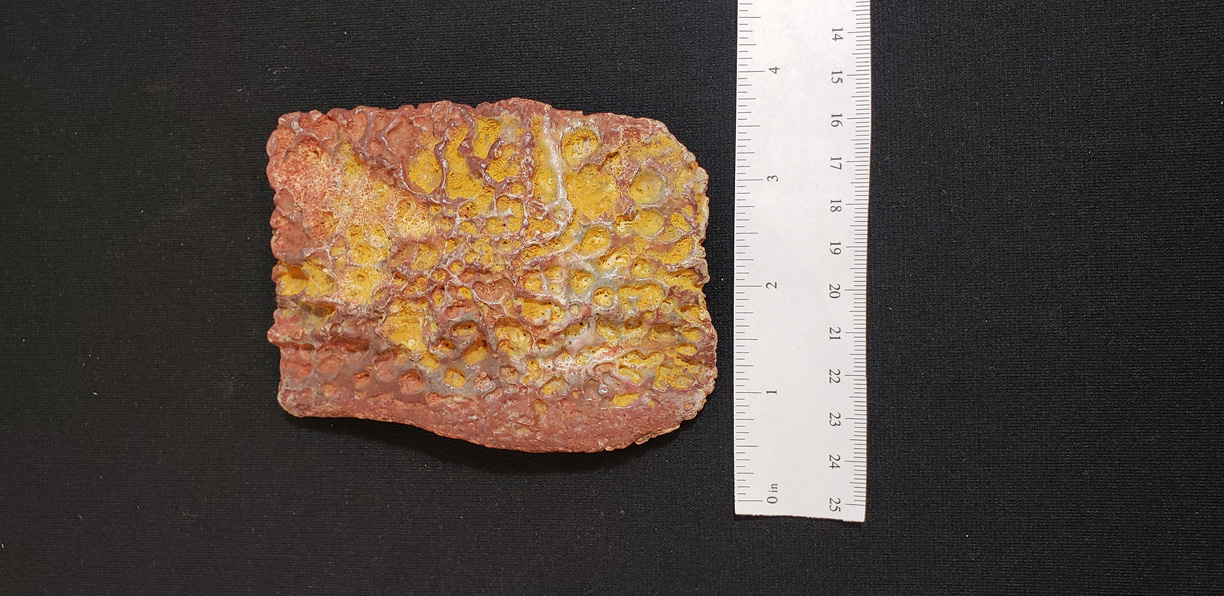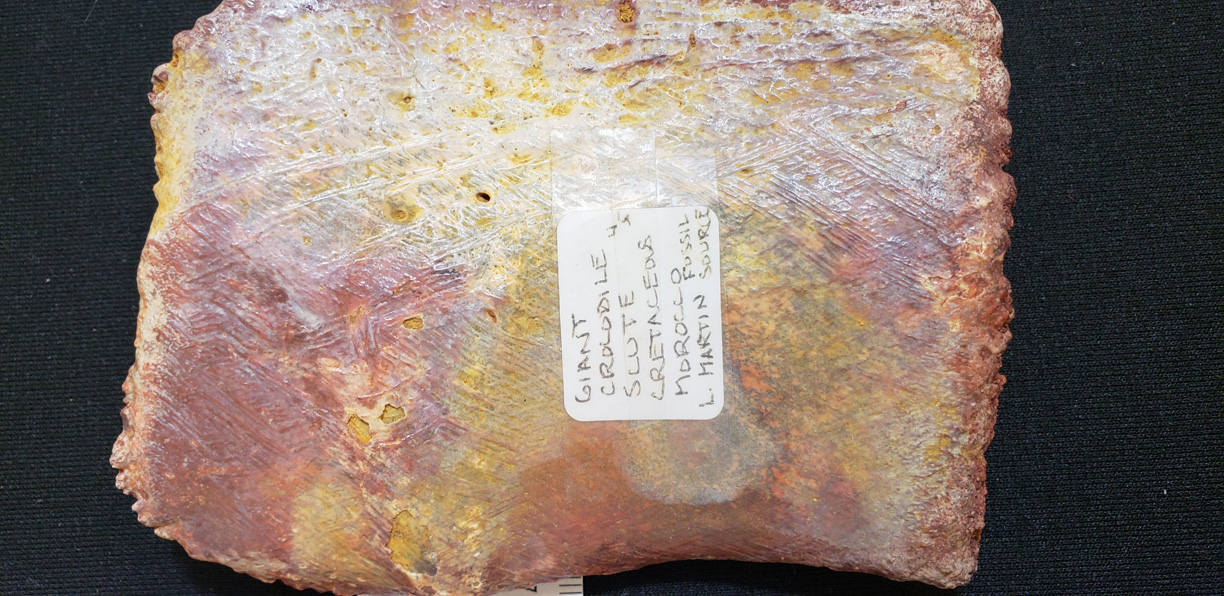
UK Kem Kem Crocodile Osteoderm
Crocodile Osteoderm (scute)
Kem Kem Beds
Upper Cretaceous (Cenomanian-Turonian)
Tafilalet Region, Morocco
Kem Kem Beds
Upper Cretaceous (Cenomanian-Turonian)
Tafilalet Region, Morocco
This example is a very large crocodile osteoderm (scute) from one of the big Upper Cretaceous Crocodylomorphs of the famous Kem Kem beds of Eastern Morocco. The scute measures 10 x 7.5 cm. It is a complete osteoderm and has wonderful detail. Specific identification is nearly impossible as osteoderms lack genus/species diagnostic characteristics. This specimen however represents a very big crocodile.
The Kem Kem Group (commonly known as the Kem Kem Beds) is a geological group in the Kem Kem region of eastern Morocco, whose strata date back to the Cenomanian stage of the Late Cretaceous. Its strata are subdivided into two geological formations, the lower Gara Sbaa Formation and the upper Douira Formation. It is exposed on an escarpment along the Algeria–Morocco border.
The reddish Cretaceous rock of these arid localities—called the Kem Kem Beds—has yielded the remains of the theropods Deltadromeus, Carcharodontosaurus , Spinosaurus and several other, poorly-known species. In fact, based on the described fossils, there would appear to be a greater abundance and diversity of predatory dinosaurs than herbivorous ones, but was there really such a surplus of carnivores at just one time? Geological processes and the capricious nature of fossilization have obscured the windows into the past that fossil-bearing rocks present, and one of these confounding factors is called time averaging. Simply put, fossils from different times can be mixed together to make it look as if all those organisms lived alongside one another when they may have actually lived hundreds, thousands, or even millions of years apart. Hence, when paleontologists try to reconstruct an area's prehistoric ecology, they must always investigate how the fossil-bearing deposits formed and how long a time period they represent.
The Kem Kem Group (commonly known as the Kem Kem Beds) is a geological group in the Kem Kem region of eastern Morocco, whose strata date back to the Cenomanian stage of the Late Cretaceous. Its strata are subdivided into two geological formations, the lower Gara Sbaa Formation and the upper Douira Formation. It is exposed on an escarpment along the Algeria–Morocco border.
The reddish Cretaceous rock of these arid localities—called the Kem Kem Beds—has yielded the remains of the theropods Deltadromeus, Carcharodontosaurus , Spinosaurus and several other, poorly-known species. In fact, based on the described fossils, there would appear to be a greater abundance and diversity of predatory dinosaurs than herbivorous ones, but was there really such a surplus of carnivores at just one time? Geological processes and the capricious nature of fossilization have obscured the windows into the past that fossil-bearing rocks present, and one of these confounding factors is called time averaging. Simply put, fossils from different times can be mixed together to make it look as if all those organisms lived alongside one another when they may have actually lived hundreds, thousands, or even millions of years apart. Hence, when paleontologists try to reconstruct an area's prehistoric ecology, they must always investigate how the fossil-bearing deposits formed and how long a time period they represent.





